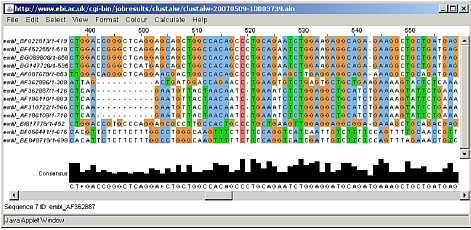You may be interested in:
Analysis of evolution from the perspective of Genetics of populations.
seminar from group Science, Reason and Faith.
Javier Novo. Pamplona, May 29, 2007.
exhibition On 29 May 2007, the professors of group of research on Science, Reason and Faith met with Professor Javier Novo, from department of Genetics of the University of Navarra, who gave a talk on Genetics of populations. Other invited professors, such as José Ignacio Murillo, from department of Philosophy, and Juan Pablo Serra, PhD student of the same university, also attended the meeting . department
Professor Novo's exhibition dealt with the Genetics of populations, which is a complete subject of the programs of study of biology. In the simplified version he presented, he avoided the mathematical apparatus and went to the substance, in an accessible and clear way. In his introduction, he emphasised that, today, the study of the mechanisms that explain evolutionary events requires the methodology of Genetics of populations. After explaining the Hardy-Weinberg equilibrium law of allele frequency, he explained the factors that can alter it: selection (greater or lesser reproductive efficiency), small population size, migrations (bottleneck or coloniser effect), possible mutations or non-random crossovers.
As he explained this law of equilibrium and its different alterations, he gave graphic and numerical examples, which clarified the magnitudes "biological efficiency" (w) and selection coefficient (s=1-w). He illustrated the different cases with a computer programme that produced a graph showing the frequency of an allele as a function of the generations and the characteristics introduced (efficiency, population size). Finally, he pointed out the non-selectionist theories of evolution, which are termed genetically neutralist; some rely on drift Genetics due to what is perhaps misleadingly called "sampling error" (small population), while others emphasise mutations in non-functional areas of the genome (Kimura). This is what makes it possible to establish the "genealogy" of living organisms through the programs of study of Genetics.

Table identifying by colour the Degree gene similarity between species (row codes)
The subsequent colloquium was initiated by Prof. Mancini, who has been working on chaos theory for many years, and who looked uneasy since the erratic frequency graph of an allele originating from small populations appeared on the screen. That's chaos! It's a complex system! And, mathematically, it is a typical case of non-linear dynamics. Professor Novo agreed agreement with this approach; in fact, he said, more and more importance is being given to factors such as drift Genetics, which unpredictably causes alleles to disappear from populations. This, together with duplications of parts of the genome and mutations of one of the copies that give it a somewhat different functionality (it is not a deleterious mutation, as it does not occur in the active zone, and there is also a functional back-up copy), makes it possible to explain evolutionary variations in which selective factors, often non-existent, have not intervened.
Prof. Pardo asked why, in selection experiments, when selection ceases, the species under investigation reverts to the wild pattern patron saint . Prof. Novo indicated that, in the system he had explained, it is only possible to consider that the wild pattern (wild patron saint ) is more efficient, so that, once the selective pressure has ceased, it is re-imposed (although this is a nascent topic and currently much debated). In any case, he added, the above mechanisms only adequately explain microevolution; the question of species change is beyond our scope at the moment. Another subject of phenomena are involved in species change (macroevolution), such as chromosome crossovers, deletions of parts of chromosomes, etc., the laws of which are still poorly understood.
Professor Mancini, at this point, went on to explain a similarity with the complex systems studied by his department: in these systems, which can be of a very varied nature, there is a tendency to increase complexity, curiously against the general tendency of nature to increase entropy. They are systems that consume energy and produce Structures ordered within themselves. These systems, as time goes by, accumulate this order in their interior with a stable patron saint , until there comes a point, which can be well studied mathematically, when this internal equilibrium becomes unstable and becomes organised in a different way, which is the one that survives afterwards. In the same way, biological systems seem to have a tendency to generate progressively more complex systems, which give rise to forms and Structures, until the maximum limit of these Structures is reached and others are formed. This approach seems to give a framework of study to macroevolution.
Asked what a complex system is, he pointed out that there is no universally accepted definition of complexity, although it has been used for some thirty years to explain systems in physics. On the other hand, he added, the appropriate approach to these systems requires a very complex mathematical treatment, so that, before being able to affirm anything in this field, which is highly debated, a great deal of prior work is needed to clarify exactly the problems posed, work . In any case, this point of view is a very attractive hypothesis for the explanation of macroevolution, although this does not free us from the study of other questions of evolution (such as the species, the natural finality of the process, etc.), which belong to the domain of other sciences.
